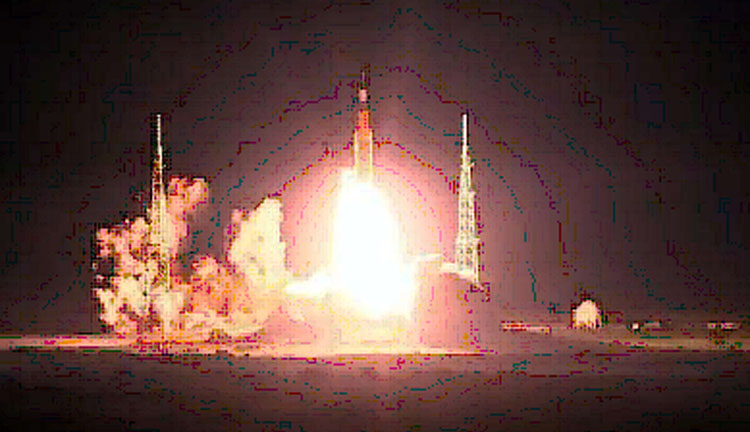NASA Launches Mega Moon Rocket, Ushering New Era Of Exploration
Kennedy Space Center, United States (AFP) Nov 16, 2022
NASA launched the most powerful rocket ever built on a journey to the Moon on Wednesday, in a spectacular blaze of light and sound that marked the start of the space agency’s new flagship program, Artemis.
The 32-story tall Space Launch System (SLS) blasted off from the Kennedy Space Center in Florida at 01:47 am (0647 GMT), producing a record 8.8 million pounds (39 meganewtons) of thrust.
“What you have done today will inspire generations to come, thank you!” Charlie Blackwell-Thompson, NASA’s first female launch director, told cheering teammates.
Fixed to the rocket’s top was the uncrewed Orion spaceship that will orbit Earth’s nearest neighbor, in a test run for later flights that should see the first woman and first person of color touch down on lunar soil by the mid-2020s.
About two hours after launch, NASA said the spacecraft was on its trajectory to the Moon, and later released the first images taken of Earth receding behind the craft.
“Now we are going back to the Moon, not just for the sake of going to the Moon, but to learn how to live on the Moon in order to prepare to send humans all the way to Mars,” NASA administrator Bill Nelson told a news conference after the launch.
“This is the next beginning, this is the Artemis generation,” added Nelson, who said he watched the launch from the roof of the rocket assembly building along with a group of astronauts.
America last sent astronauts to the Moon during the Apollo era, from 1969-1972.
This time it hopes to build a sustained presence — including a lunar space station — to help prepare for an eventual mission to Mars in the 2030s.
There were nervous moments as teams worked to overcome technical issues that ate into the two-hour launch window, which opened at 1:04 am.
First, engineers were forced to pause the flow of liquid hydrogen into the core stage Tuesday night because of a valve leak, but a team sent to the launch pad resolved the issue after about an hour, by tightening loose bolts.
Later, the space agency reported that a radar site monitoring the rocket’s flight path was experiencing problems due to a faulty ethernet switch, which had to be replaced.
It was third time lucky for NASA after two previous launch attempts were canceled for technical reasons. The launch was also delayed due to weather setbacks including Hurricane Ian, which battered Florida in late September.
‘Extremely Excited’
About 100,000 people were expected to have gathered along the coast to witness the historic event.
Todd Garland drove from Frankfurt, Kentucky to watch from Cocoa Beach.
Wearing an Artemis T-shirt, the 55-year-old told AFP tearfully: “This has been an experience I’ve looked forward to all my life.
Courtesy: Spacewar

